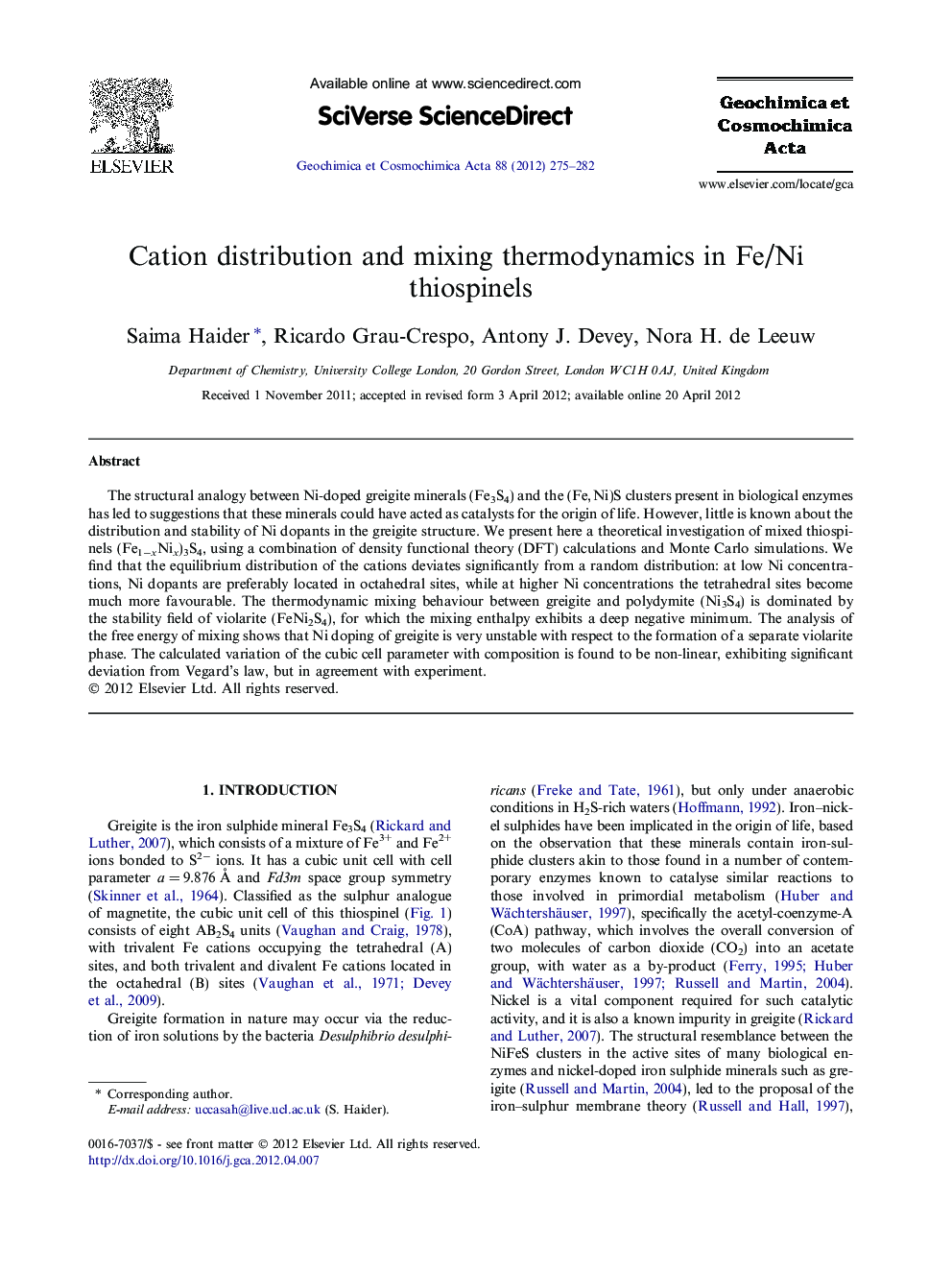| Article ID | Journal | Published Year | Pages | File Type |
|---|---|---|---|---|
| 6439241 | Geochimica et Cosmochimica Acta | 2012 | 8 Pages |
Abstract
The structural analogy between Ni-doped greigite minerals (Fe3S4) and the (Fe, Ni)S clusters present in biological enzymes has led to suggestions that these minerals could have acted as catalysts for the origin of life. However, little is known about the distribution and stability of Ni dopants in the greigite structure. We present here a theoretical investigation of mixed thiospinels (Fe1âxNix)3S4, using a combination of density functional theory (DFT) calculations and Monte Carlo simulations. We find that the equilibrium distribution of the cations deviates significantly from a random distribution: at low Ni concentrations, Ni dopants are preferably located in octahedral sites, while at higher Ni concentrations the tetrahedral sites become much more favourable. The thermodynamic mixing behaviour between greigite and polydymite (Ni3S4) is dominated by the stability field of violarite (FeNi2S4), for which the mixing enthalpy exhibits a deep negative minimum. The analysis of the free energy of mixing shows that Ni doping of greigite is very unstable with respect to the formation of a separate violarite phase. The calculated variation of the cubic cell parameter with composition is found to be non-linear, exhibiting significant deviation from Vegard's law, but in agreement with experiment.
Related Topics
Physical Sciences and Engineering
Earth and Planetary Sciences
Geochemistry and Petrology
Authors
Saima Haider, Ricardo Grau-Crespo, Antony J. Devey, Nora H. de Leeuw,
